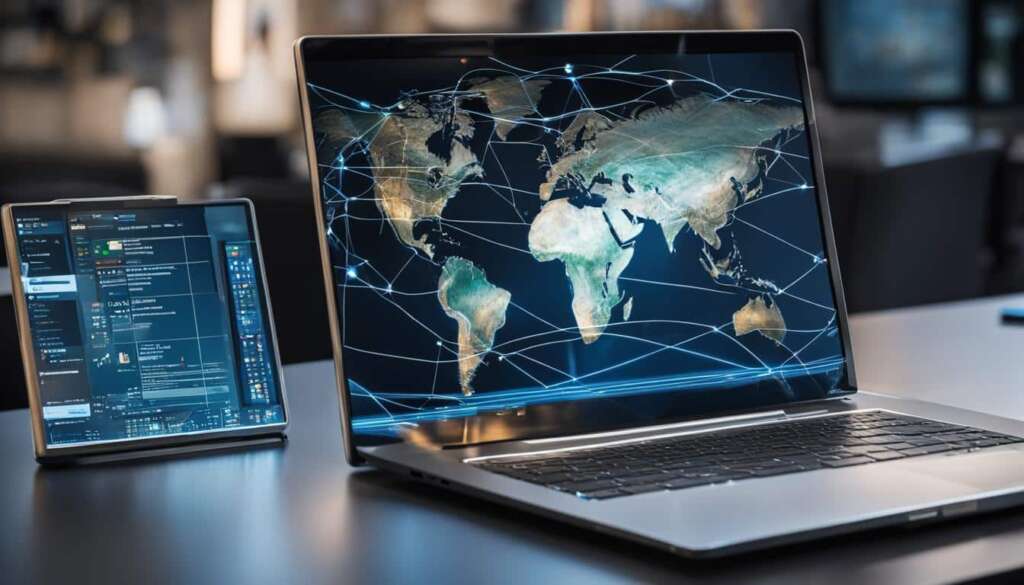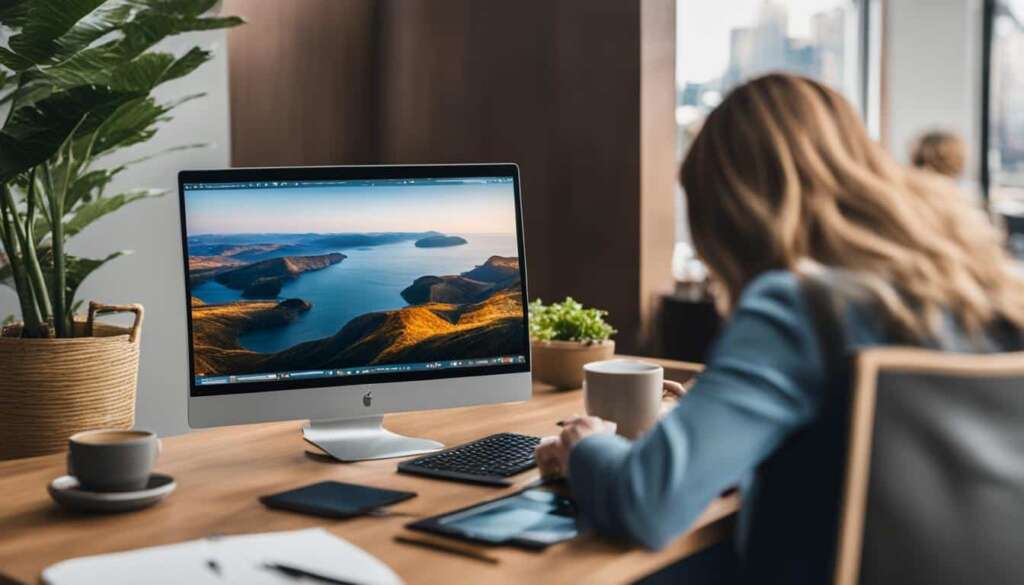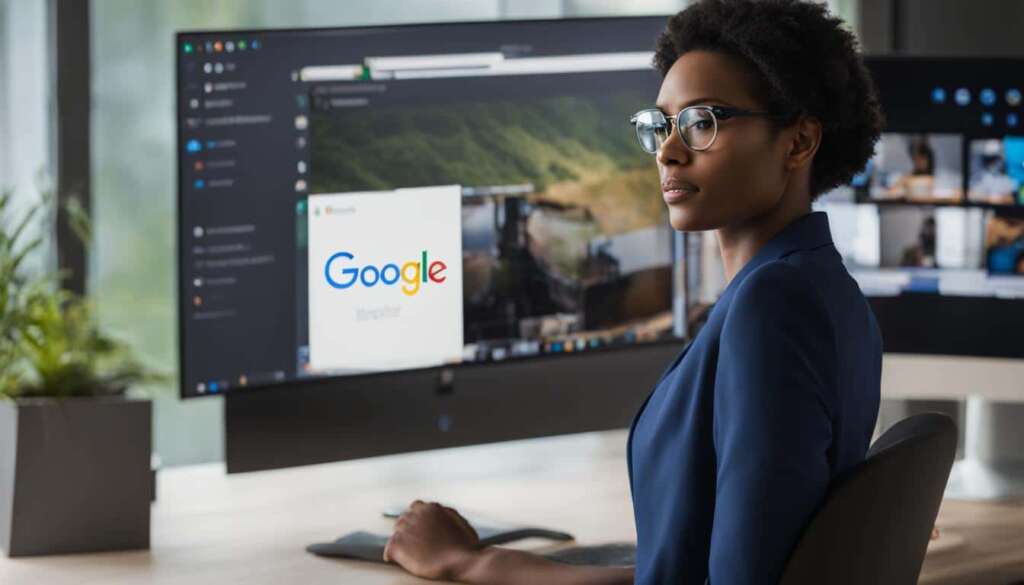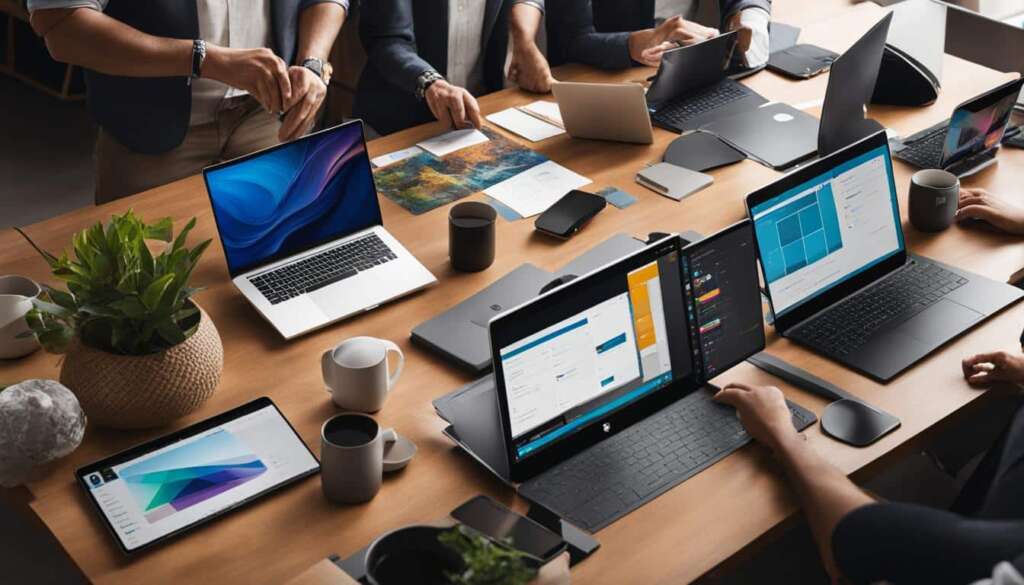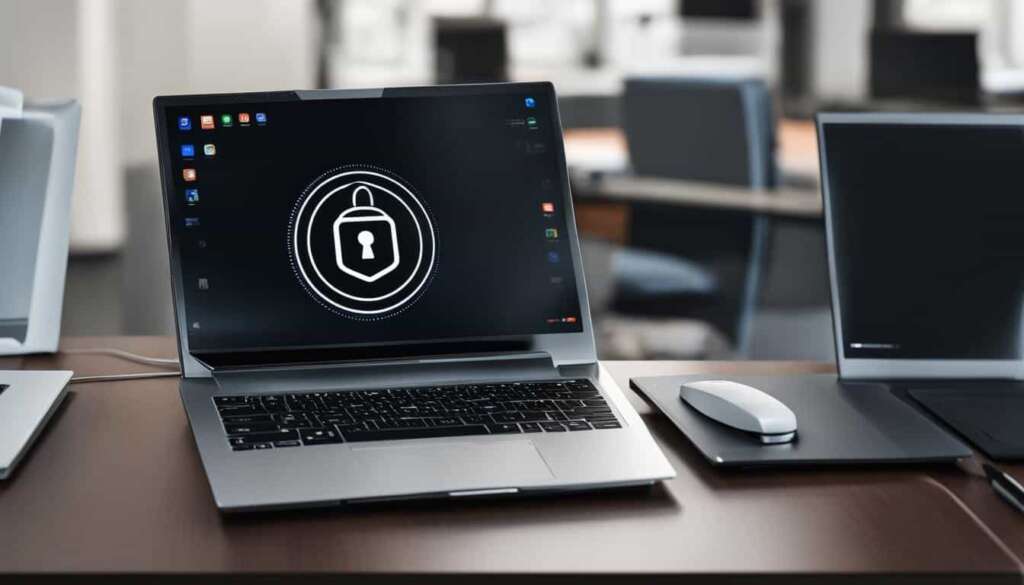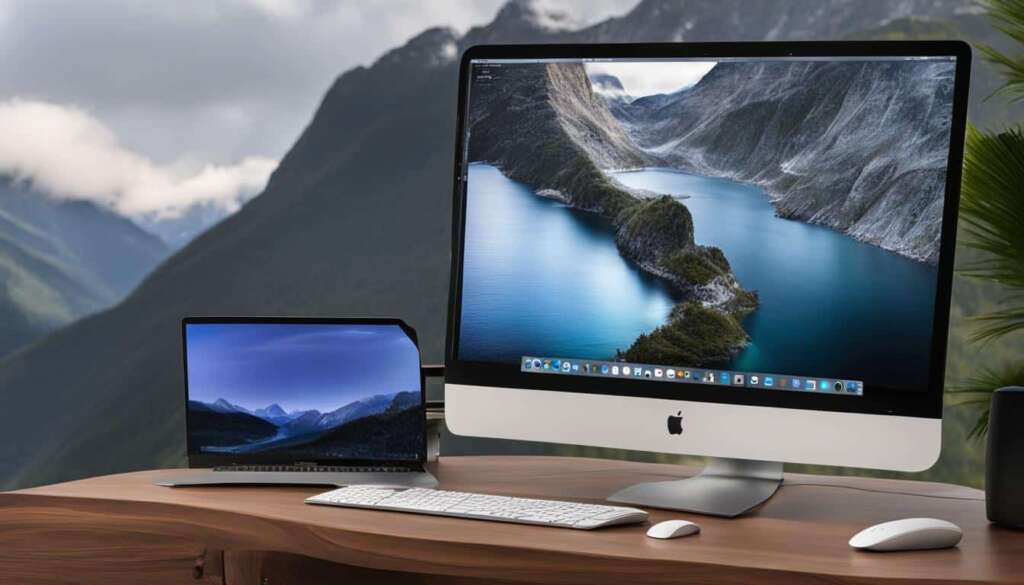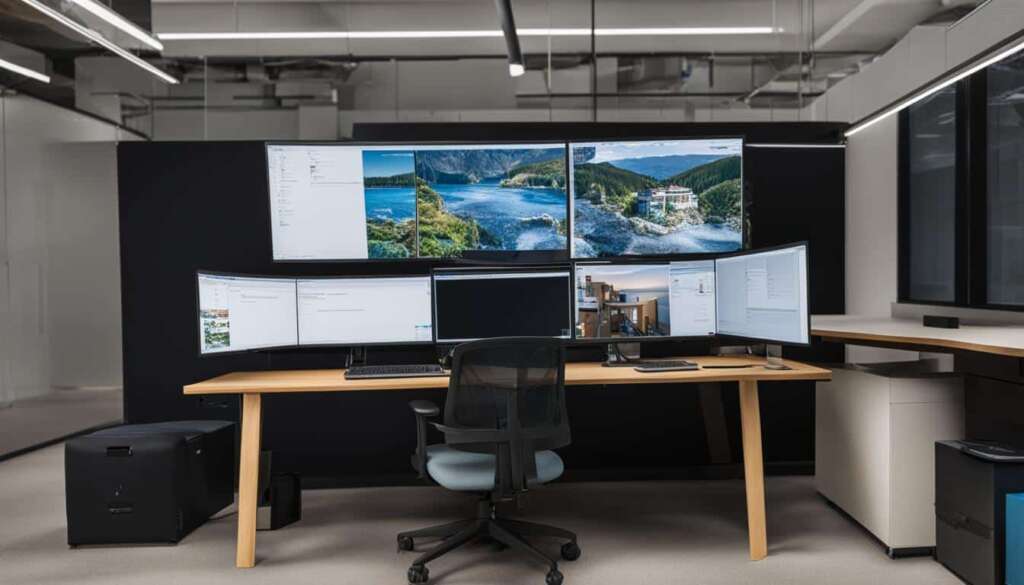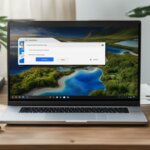Table of Contents
Welcome to the world of remote desktop solutions, where accessing your computer from anywhere becomes a reality. Whether you are a remote worker, an IT professional, or a software developer, remote desktop software provides a seamless and secure connection to your computer, allowing you to work as if you were sitting right in front of it. In this article, we will explore the best remote desktop tools and solutions to unlock the full potential of remote desktop access.
Remote desktop software bridges the gap between physical distance and productivity. With remote desktop connection, you can remotely access your Windows PC or even non-Windows computers such as Mac, Raspberry Pi, or Linux. It’s a game-changer for individuals and businesses alike.
One of the most popular and reliable remote desktop management tools is Remote.It. This powerful solution simplifies network configuration and enhances security, eliminating the need for complex networking knowledge or modifying network settings. With Remote.It, you can easily set up remote desktop access to your Windows PC following a few simple steps. And the best part? It supports cross-platform access, ensuring you can connect to your computer from any device.
Remote desktop solutions have countless use cases. For remote workers, it enables seamless telecommuting, allowing you to access your work computer from the comfort of your home or any other location. IT professionals rely on remote desktop for providing support and troubleshooting, eliminating the need for expensive and time-consuming on-site visits. Software developers and testers use remote desktop to work with virtual machines and test their applications in different environments. Server management becomes a breeze with remote desktop, ensuring you can monitor and administer your servers from anywhere.
Collaborative projects benefit greatly from remote desktop access, as team members can easily share resources and access a central workstation. Training and education also become more accessible, with instructors having the ability to remotely access educational resources and software. Remote desktop is especially valuable for businesses with specialized software requirements, as it saves the hassle of installing the software on multiple machines.
In times of business continuity, disaster recovery, or even during unforeseen events like pandemics, remote desktop ensures uninterrupted operations. By offering real-time monitoring and reporting, it enables businesses to stay on top of critical processes. And with the rise of the Internet of Things (IoT), remote desktop is crucial for managing and monitoring IoT devices, making it an indispensable tool in today’s interconnected world.
When it comes to remote desktop solutions, Microsoft Remote Desktop stands out as a top choice. With simplified remote access, centralized data management, enhanced collaboration, application compatibility, robust security features, and streamlined IT management, Microsoft Remote Desktop offers everything you need to unlock the full potential of remote desktop access- from individual use-cases to enterprise-level requirements.
So, get ready to experience the freedom and flexibility of remote desktop solutions. Discover the best tools and solutions to unlock seamless access to your computer, and make remote work a smooth and productive experience.
How to Setup Remote Desktop using Remote.It
Setting up remote desktop access can be a daunting task, especially when it involves network configurations and security concerns. However, with the help of Remote.It, the process becomes simplified and more secure. In this section, we will guide you through the steps to set up remote desktop using Remote.It on your Windows PC, ensuring seamless network connectivity and efficient access to your desktop.
- Enable Remote Desktop on the target Windows PC:
To begin, you need to enable Remote Desktop on the Windows PC that you want to access remotely. This can be done by following these steps:- Open the Start menu and search for “Remote Desktop settings”.
- Click on “System” in the search results and navigate to the “Remote Desktop” section.
- Toggle the switch to enable Remote Desktop.
- Adjust sleep settings:
In order to keep your Windows PC accessible at all times, it is recommended to change the sleep settings to “Never Sleep”. You can do this by:- Going to “Settings” on your Windows PC.
- Selecting “System” and then “Power & sleep”.
- Adjusting the sleep settings to “Never” for both “On battery power, turn off after” and “When plugged in, turn off after”.
- Ensure administrative access:
To successfully install Remote.It remotely, it is important to have administrative access to the target Windows PC. This can be done by:- Opening the “Settings” menu on your Windows PC.
- Clicking on “Accounts” and selecting the “Family & other users” tab.
- Ensuring that your user account has administrative privileges.
- Download and install Remote.It:
Once your Windows PC is ready, you can proceed to download and install Remote.It. Follow these steps:- Visit the Remote.It website (https://remote.it).
- Download the Remote.It software for Windows.
- Run the installer and follow the prompts to complete the installation process.
- Sign in to your Remote.It account or create a new one if you don’t have an existing account.
- Add the device and install RemoteIt application:
To establish the connection, you need to add the target Windows PC to the Remote.It platform and install the RemoteIt application on the remote computer. Here’s how:- Login to your Remote.It account on the remote computer (Windows, Mac, Linux, or Mobile).
- Add the device that will accept RDP services by providing the necessary details.
- Install the RemoteIt application on the remote computer by following the provided instructions.
- Establish the remote desktop connection:
Now that everything is set up, you can establish a remote desktop connection using the Windows Remote Desktop Protocol (RDP) service. You have two options:- Open the RemoteIt application on the remote computer.
- Select the target Windows PC from the device list.
- Make a remote desktop connection using the Windows RDP service.
OR
- Use the Microsoft Remote Desktop client application on your local computer.
- Add a new PC in the application.
- Input the URL and port provided by the Remote.It application.
- Enter the username and password for the target Windows PC.
By following these steps, you will be able to successfully set up remote desktop using Remote.It and enjoy convenient access to your Windows PC from any location. Whether you are working remotely or need to access your home computer while traveling, setting up remote desktop connection using Remote.It ensures network connectivity and seamless remote access to your Windows desktop.
Everyday Use Cases for Remote Desktop
Remote Desktop is a versatile solution that offers a multitude of everyday use cases, catering to various industries and work scenarios. Whether you’re a remote worker, IT professional, developer, or educator, Remote Desktop enables seamless access and enhances productivity. Let’s explore some of the key use cases where Remote Desktop proves invaluable:
1. Remote Work and Telecommuting
Remote Desktop enables employees to access their office computers from anywhere, ensuring uninterrupted productivity and efficient collaboration.
2. IT Support and Troubleshooting
IT professionals can remotely connect to users’ computers, diagnose issues, install updates, configure settings, and resolve technical problems efficiently, reducing downtime.
3. Software Development and Testing
Developers can leverage Remote Desktop to access virtual machines, servers, or remote environments for software development and testing, enabling controlled testing and easier bug replication and debugging.
4. Server Management
System administrators can remotely manage servers, perform updates, monitor processes, and back up data without the need to be physically present, ensuring efficient server management and operation.
5. Collaborative Projects
Teams working on collaborative projects can share a central workstation through Remote Desktop, enabling seamless access to files, software, and resources, fostering collaboration and productivity.
6. Training and Education
Instructors can use Remote Desktop to access a central computer hosting educational software or resources, making it possible to teach remotely and provide students with access to specialized software.
7. Access to Specialized Software
Remote Desktop enables users to access specialized software that is installed only on specific workstations, allowing access from other machines without the need for additional installations.
8. Business Continuity and Disaster Recovery
Remote Desktop plays a crucial role in business continuity plans, enabling employees to work from alternative locations during disasters or disruptive events, ensuring minimal disruption to business operations.
9. Monitoring and Reporting
In industries that require real-time monitoring, such as manufacturing, healthcare, and retail, Remote Desktop provides constant access for monitoring critical systems and generating reports.
10. IoT Device Management
With the proliferation of IoT devices, Remote Desktop allows employees to remotely manage and monitor these devices, such as smart home devices or industrial machinery, ensuring efficient control and maintenance.
Everyday Use Cases for Remote Desktop
| Use Case | Benefits |
|---|---|
| Remote Work and Telecommuting | Enhanced productivity, flexible work arrangements |
| IT Support and Troubleshooting | Reduced downtime, efficient issue resolution |
| Software Development and Testing | Controlled testing environments, streamlined debugging |
| Server Management | Efficient server maintenance, remote monitoring |
| Collaborative Projects | Seamless teamwork, resource sharing |
| Training and Education | Access to educational resources, remote teaching |
| Access to Specialized Software | Software availability, flexibility in resource usage |
| Business Continuity and Disaster Recovery | Robust continuity plans, minimal disruption |
| Monitoring and Reporting | Real-time insights, comprehensive reporting |
| IoT Device Management | Efficient device control, remote monitoring |
Benefits of Using Microsoft Remote Desktop
Microsoft Remote Desktop offers a range of benefits for users, enhancing productivity and simplifying remote access.
Firstly, Microsoft Remote Desktop provides simplified remote access, allowing users to connect to their work or home computers from anywhere with an internet connection. This is particularly advantageous for professionals who are constantly on the move or organizations with multiple offices in different locations. With remote access, users can stay connected and productive, accessing their files, applications, and resources seamlessly.
Secondly, using Microsoft Remote Desktop can be more cost-effective compared to maintaining multiple workstations. Users can access a powerful central computer from less capable machines, eliminating the need for expensive hardware at every desk. This cost-effectiveness makes remote desktop an attractive solution for businesses looking to optimize their IT infrastructure and reduce hardware expenses.
Another key benefit of Microsoft Remote Desktop is centralized data management. Companies can store all their data centrally on a single machine or server, making it easier to manage, backup, and secure important files and applications. Centralized data management is particularly advantageous for businesses that need to comply with data protection regulations, providing a secure and reliable repository for sensitive information.
Furthermore, Microsoft Remote Desktop enhances collaboration by enabling users to share resources, files, and applications with ease. Whether team members are located in different geographical locations or working remotely, remote desktop ensures seamless collaboration, fostering efficient teamwork and project completion. This level of collaboration greatly enhances productivity and agility within organizations.
Alongside enhanced collaboration, Microsoft Remote Desktop offers application compatibility, allowing users to access specialized software applications hosted on specific machines. This eliminates the need to transfer large files or install software on multiple devices, streamlining workflows and saving valuable time.
In terms of business continuity and disaster recovery, Microsoft Remote Desktop plays a crucial role. In the event of a natural disaster or pandemic, employees can continue working remotely, ensuring uninterrupted business operations. Remote desktop enables organizations to maintain productivity and workflow, even in challenging circumstances, ensuring business continuity and mitigating potential losses.
Moreover, security is paramount, and Microsoft Remote Desktop prioritizes it. The solution comes with robust security features such as Network Level Authentication (NLA) and encryption, providing an additional layer of protection for remote connections. This is particularly vital for businesses handling sensitive or confidential data, ensuring data integrity and minimizing security risks.
For IT administrators and developers, Microsoft Remote Desktop offers streamlined IT management. IT professionals can perform maintenance, updates, and troubleshooting remotely, reducing the time and effort required for these tasks. This centralized management simplifies the overall IT management process, increasing efficiency and allowing IT teams to focus on strategic initiatives.
Microsoft Remote Desktop is also widely used for developer and IT use-cases, supporting developers in testing software on different operating systems and providing access to development servers. It also enables IT professionals to manage cloud-based or on-premise servers, databases, and other resources efficiently. This versatility empowers developers and IT teams to work seamlessly, accelerating software development and IT operations.
Lastly, Microsoft Remote Desktop caters to the growing demand for IoT device management. With its familiar interface, remote desktop provides an intuitive solution for managing and monitoring IoT devices, eliminating the need for complex command-line tools. This simplification enhances operational efficiency and empowers businesses to harness the potential of IoT seamlessly.
In conclusion, Microsoft Remote Desktop offers a comprehensive suite of benefits, including simplified remote access, cost-effectiveness, centralized data management, enhanced collaboration, application compatibility, business continuity, security, streamlined IT management, support for developer and IT use-cases, and IoT device management. By embracing Microsoft Remote Desktop, individuals and organizations can unlock a world of possibilities, enabling seamless remote access and empowering productivity in an increasingly interconnected world.
FAQ
What is remote desktop?
Remote desktop is a solution that allows users to access a computer remotely and use it as if they were sitting in front of it.
What is Remote.It?
Remote.It is a management tool that simplifies network configuration and enhances security for remote desktop access.
How do I set up remote desktop using Remote.It?
To set up remote desktop using Remote.It, you need to enable Remote Desktop on your Windows PC, change sleep settings to “Never Sleep,” and ensure administrative access for remote installation. Then, visit the Remote.It website, download and install the software for Windows, and sign in or create a new account. After that, add your device to accept RDP services and install the Remote.It application on the remote computer. Once installed, open the application, select the target Windows PC from the device list, and make a remote desktop connection using the Windows RDP service.
Can I use Remote.It with non-Windows computers?
Yes, Remote.It supports cross-platform access for non-Windows computers like Mac, Raspberry Pi, and Linux, using protocols like VNC.
What are the everyday use cases for remote desktop?
Remote desktop has various use cases, including remote work, IT support, software development and testing, server management, collaborative projects, training and education, access to specialized software, business continuity and disaster recovery, monitoring and reporting, and IoT device management.
What are the benefits of using Microsoft Remote Desktop?
Microsoft Remote Desktop provides simplified remote access, cost-effectiveness, centralized data management, enhanced collaboration, application compatibility, business continuity, security, streamlined IT management, and support for developer and IT use-cases, as well as IoT and specialized devices.

